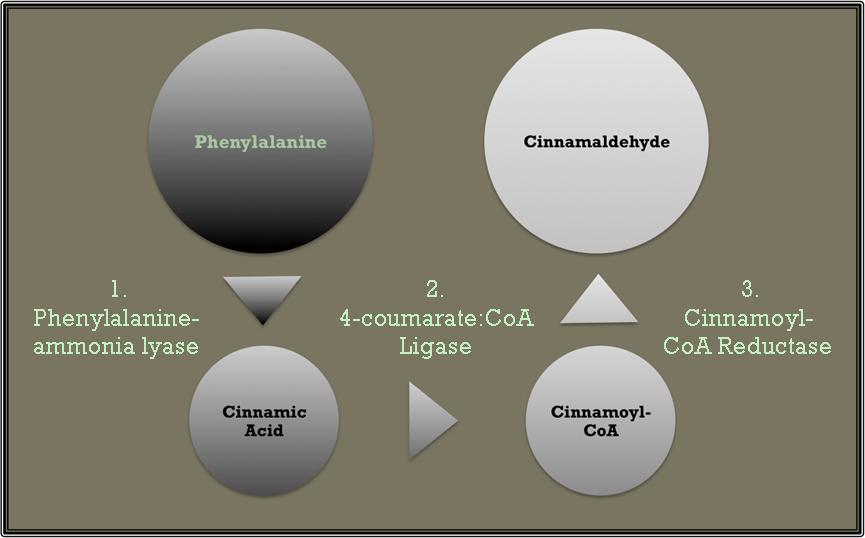Team:Nevada
From 2009.igem.org
| Line 123: | Line 123: | ||
<td rowspan="2" width="45px"></td> | <td rowspan="2" width="45px"></td> | ||
<td rowspan="3" width="300px"> | <td rowspan="3" width="300px"> | ||
| - | <p class="quote">The goal of our project is to | + | <p class="quote">The goal of our project is to express the genes encoding enzymes for the <b>cinnamaldehyde biosynthetic pathway</b> into ''E. coli'' to produce a eco-friendly mosquitocide. The ultimate goal of this project is to assemble this plant specific pathway in ''E. coli'' in order to cost-effectively produce large quantities of cinnamaldehyde. If successful, cinnamaldehyde could be distributed to developing countries to help limit the spread of mosquito borne diseases. Also, we are in the process of engineering the aquatic plant duckweed to produce large quantities of cinnamaldehyde. Since duckweed grows readily in stagnant water and is fed upon by mosquito larvae, we believe that duckweed could function as an effective vehicle to deliver this eco-friendly insecticide. Using these two approaches we hope to develop cinnamaldehyde as a viable alternative to more toxic or environmentally damaging insecticides.</p> |
</td> | </td> | ||
<td rowspan="3" width="40px"></td> | <td rowspan="3" width="40px"></td> | ||
Revision as of 02:45, 22 October 2009
Undergraduate Team |
Coaches |
Graduate Student |
The goal of our project is to express the genes encoding enzymes for the cinnamaldehyde biosynthetic pathway into E. coli to produce a eco-friendly mosquitocide. The ultimate goal of this project is to assemble this plant specific pathway in E. coli in order to cost-effectively produce large quantities of cinnamaldehyde. If successful, cinnamaldehyde could be distributed to developing countries to help limit the spread of mosquito borne diseases. Also, we are in the process of engineering the aquatic plant duckweed to produce large quantities of cinnamaldehyde. Since duckweed grows readily in stagnant water and is fed upon by mosquito larvae, we believe that duckweed could function as an effective vehicle to deliver this eco-friendly insecticide. Using these two approaches we hope to develop cinnamaldehyde as a viable alternative to more toxic or environmentally damaging insecticides. |
||||||
|
|
|
|
||||||

 "
"


